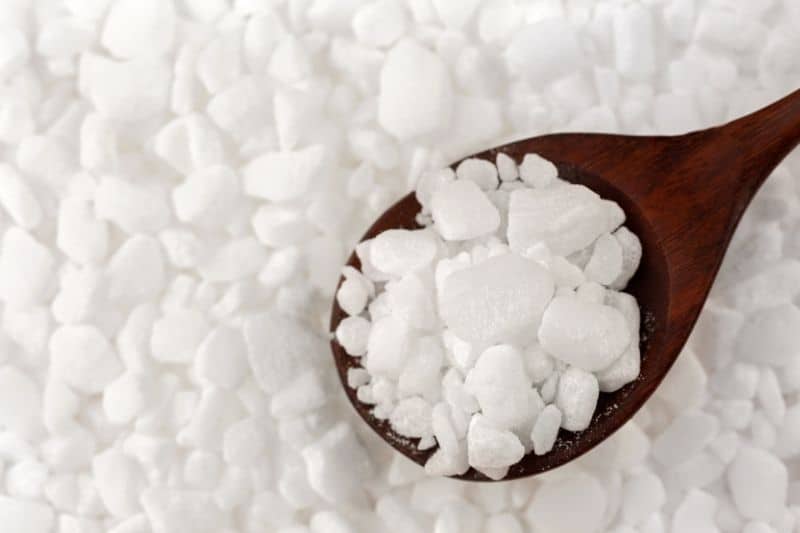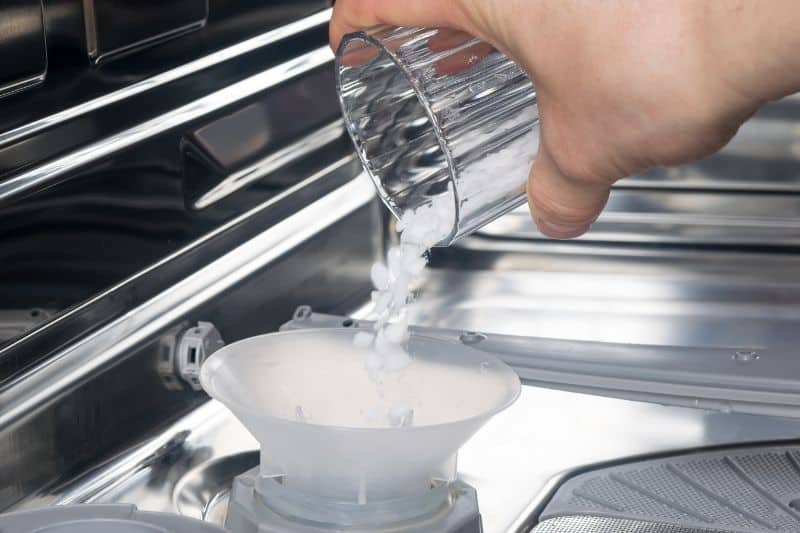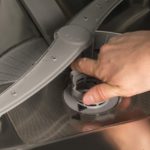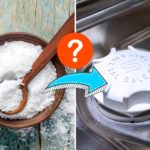If you have just started using a new dishwasher or are refilling the salt, you may find that the salt reservoir is full of water. For many people, especially new dishwasher users, this may be a concern.
Water in the Salt Reservoir
The salt reservoir in a dishwasher is often in the bottom and off to the side. There is a screw cap on the top that needs removing so you can refill the reservoir. When refilling the salt, it is common that as you pour the salt in, water floods out.
This is absolutely nothing to be concerned about. After the first use, it is completely normal that there is water in the salt reservoir. As you pour new salt in, the water gets displaced and floods out.
The salt reservoir is part of the dishwasher’s water softening system, and the salt gets mixed with water in the dishwasher. The process means that excess water remains in the salt reservoir.
What Is Dishwasher Salt For?
A dishwasher needs salt for it to perform optimally. Dishwashers feature a water softening system, and this system needs salt. The sodium found in dishwasher salt works in conjunction with resin balls in the dishwasher to absorb the hardness in the water.

Without dishwasher salt, the resin balls can not continue to absorb the calcium and magnesium that is in hard water.
The water softening in a dishwasher is crucial because detergents work best in soft water, so it will help you achieve better results. Hard water can leave glassware cloudy, and lead to a build up of limescale in the dishwasher over time too.
First Use
If you have just had a new dishwasher installed, make sure that you read the manufacturer’s guide before filling up the salt reservoir for the first time. Some manufacturers recommend that you add both water and salt to the reservoir before the first use.
If you do need to add water to the reservoir for the first use, you should not need to worry about doing this again in the future. There should always be water left in the reservoir after a cycle completes.
Refilling Dishwasher Salt
To keep your glasses shiny and surfaces free from limescale, the salt reservoir in your dishwasher will need refilling regularly. Fortunately, for most dishwashers, it is a simple process.
First, remove the bottom rack. Some will simply pull straight out, whereas others might need lifting or to be unclipped. If your dishwasher has a built-in water softener, it will be in the bottom underneath the tray.
Unscrew the salt reservoir cap. Using a funnel (often provided with the dishwasher), fill the reservoir up with dishwasher salt until the reservoir is full.

Most of the water in the reservoir will flood out as it displaced by salt. Once you have filled the reservoir, replace the cap. Make sure you tighten the cap securely so that it stays place during the cycle.
It is easy to spill dishwasher salt whilst refilling the reservoir. If you do spill the salt, wipe down the affected surfaces inside the dishwasher with a wet cloth, or rinse it down the drain with clean water.
If salt is left behind, it can scratch the inside of the appliance, or delicate items in the dishwasher, such as glassware.
When to Refill Dishwasher Salt
Some machines have a built-in indicator to let you know that the salt needs replacing. For some machines, this is a light that will flash on the control panel.
Other dishwashers have a float built into the salt reservoir’s cap. When the reservoir is full, the float will be easily visible. If you cannot see the float, it is time to refill the reservoir.
Not all dishwashers have an indicator that the salt level is getting low. If your dishwasher does not have one, it is a good rule of thumb to refill the reservoir around once a month.
If you are not sure if your dishwasher has a salt level indicator, check the manufacturer’s guide for tips.
If you find that items are coming out of the dishwasher with streaks or clouding, it is a sign that the machine does not have enough salt to adequately soften the water. This effect tends to be especially noticeable on glassware.

Lover of coffee, painting, and all things cute and fluffy. I’m always on the lookout for easier, more gentle ways to tackle awful household chores.






